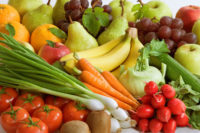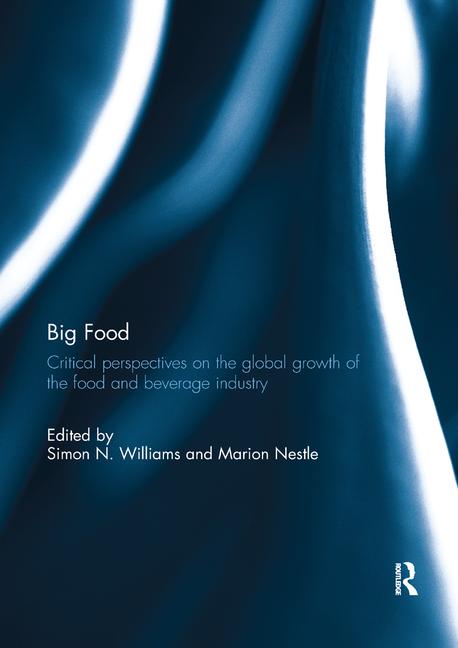Supplying the Locavore Movement






[Editor’s Note: The locavore movement has been strong enough to stimulate some processors to consider incorporating if not regional, at least domestic product into their formulations. The following is an edited (for brevity) version of an article titled, “Local Foods Marketing Channels Encompass a Wide Range of Producers,” first appearing in the December 2011 issue of Amber Waves, published by the U.S. Department of Agriculture, Economic Research Service (ERS). See more information at the end of this article.]
February 2012/Prepared Foods -- Consumer demand for locally produced food is driven by demand for freshness, support for the local economy and personal communication with the producer. In addition to buying directly from farmers, consumers also purchase locally grown food through retail channels that enable the purchase of local foods with one-stop convenience.
When intermediated, or indirect, local-food marketing channels, such as sales through grocers, restaurants and regional distributors, are combined with direct-to-consumer sales by farm operations, a more complete picture of the local food market emerges than is the case when only direct-to-consumer sales are considered.
Based on data from USDA’s “Agricultural Resource Management Survey” (ARMS), local food sales amounted to $4.8 billion in 2008, when direct-to-consumer and intermediated sales of locally grown food are measured—four times higher than estimates based on direct-to-consumer sales alone. ERS researchers used this data to explore differences in the marketing channels used by farms selling locally; to examine relationships between producer location and marketing channels used; and to assess operators’ commitments to farming among farms with and without local food sales.
Marketing Channels for Locally Grown Food
The 2008 ARMS measured local food sales by asking farm operators whether they sold directly to consumers at farmers’ markets, roadside stands, on-farm stores and community-supported agriculture, or through intermediated sales to local grocers, restaurants and regional distributors during the year. Over half of local food sales—$2.7 billion—were from farms selling local foods exclusively through intermediated marketing channels. Farms using both direct-to-consumer and intermediated marketing channels accounted for a quarter of local food sales ($1.2 billion).
Use of local food marketing channels varied with farm size. Small farms (gross annual sales under $50,000) relied on direct-to-consumer channels more than large farms, which were more likely to use intermediated channels for their local food sales. Large farms (annual sales over $250,000) that market local foods exclusively through intermediated channels accounted for 92% of these intermediated sales, while small and medium-sized farms that market local foods exclusively through direct-to-consumer channels accounted for 73% of these sales.
The value of local foods sold through individual marketing channels is not known. However, there is information on the number of individual marketing channel types each producer used. Farmers’ markets and roadside stands each accounted for over one third of the local food marketing outlet types used by small farms (35 and 34%, respectively). Farmers’ markets and roadside stands were also used by large farms reporting local food sales (15 and 24%, respectively). Large farms, however, relied on regional distributors over four times more often than small farms to market their local food. Interestingly, grocers and restaurants, as a share of marketing channel types, were utilized by small and large farms selling locally at similar rates, suggesting that these marketing channels are available, regardless of farm size.
Marketing Channel Use Varies
Previous research found direct-to-consumer sales are highest in metropolitan areas, and this finding also holds for intermediated sales of locally grown food. While farms that reported local food sales in 2008 were more likely to be located in metropolitan counties, the rate varied among regions. The Northeast and the West Coast regions had the highest local food sales, but the regions differed with respect to the marketing channels used.
Farms with both direct-to-consumer and intermediated local food sales on the West Coast (California, Oregon and Washington) accounted for less than 8% of all U.S. farms reporting local food sales but were responsible for nearly 24% of the value of U.S. local food sales. In 2008, 85% of the value of West Coast local food sales occurred through intermediated channels. The dominance of intermediated marketing channels among West Coast local food farms is likely because these farms are typically larger and located farther from metro areas than farms in other regions, necessitating the use of intermediated, rather than direct-to-consumer marketing channels. High levels of local food production on the West Coast may also be related to the region’s suitability for fruit and vegetable production. Recognized for its varied climates, long growing season and extensive irrigation networks, the West Coast produces 56% of the nation’s vegetables, fruit and nuts, and other specialty crops. pf
Looking for a reprint of this article?
From high-res PDFs to custom plaques, order your copy today!








